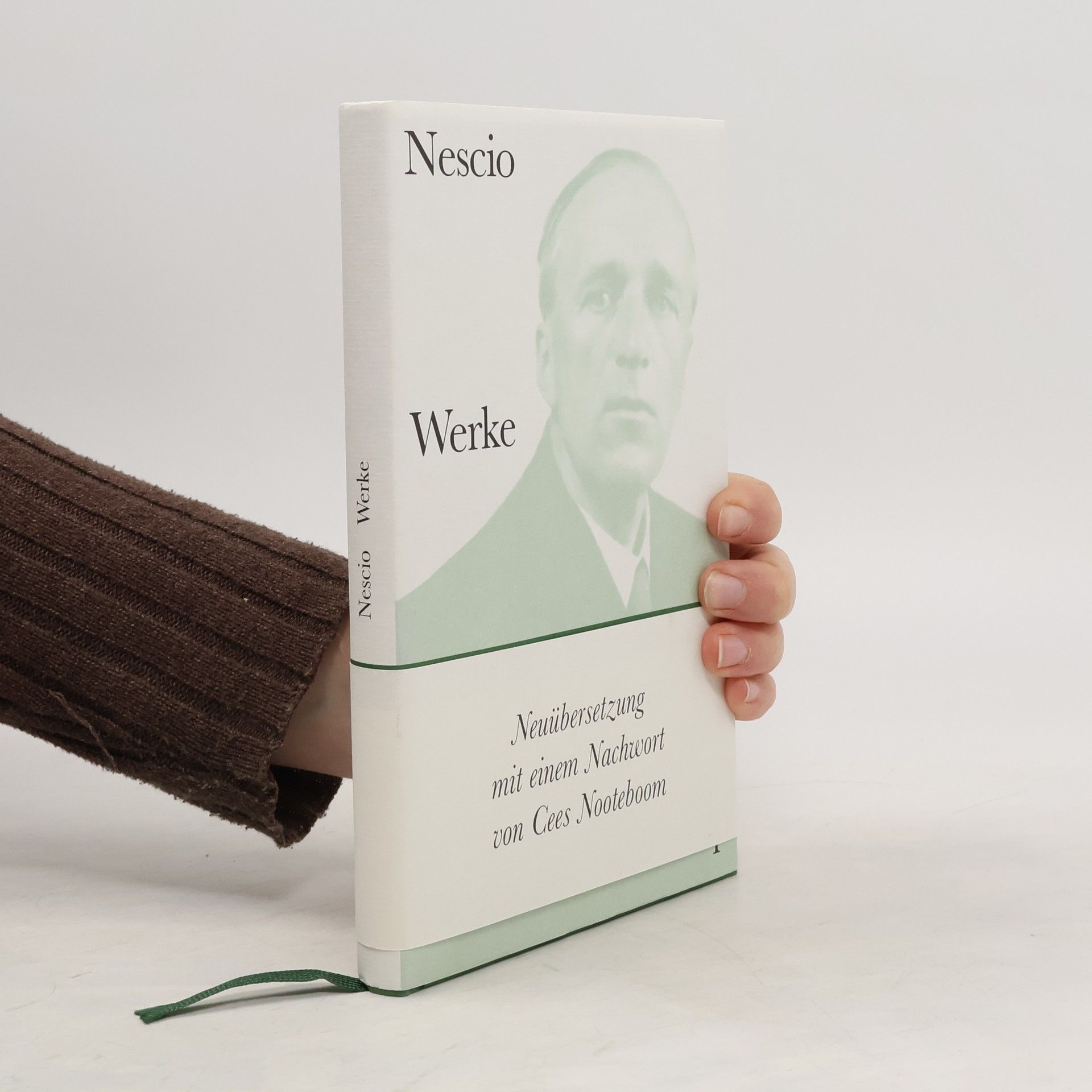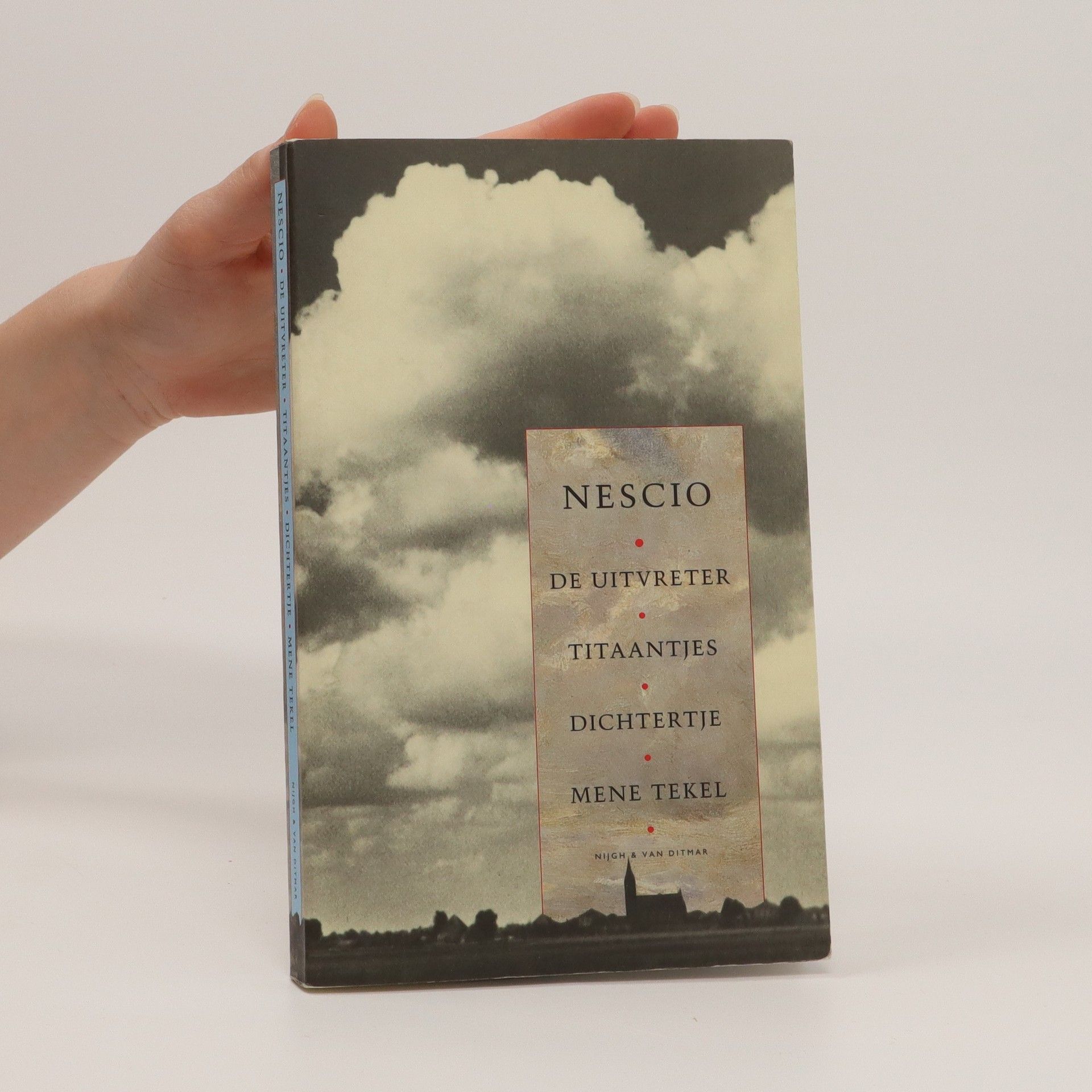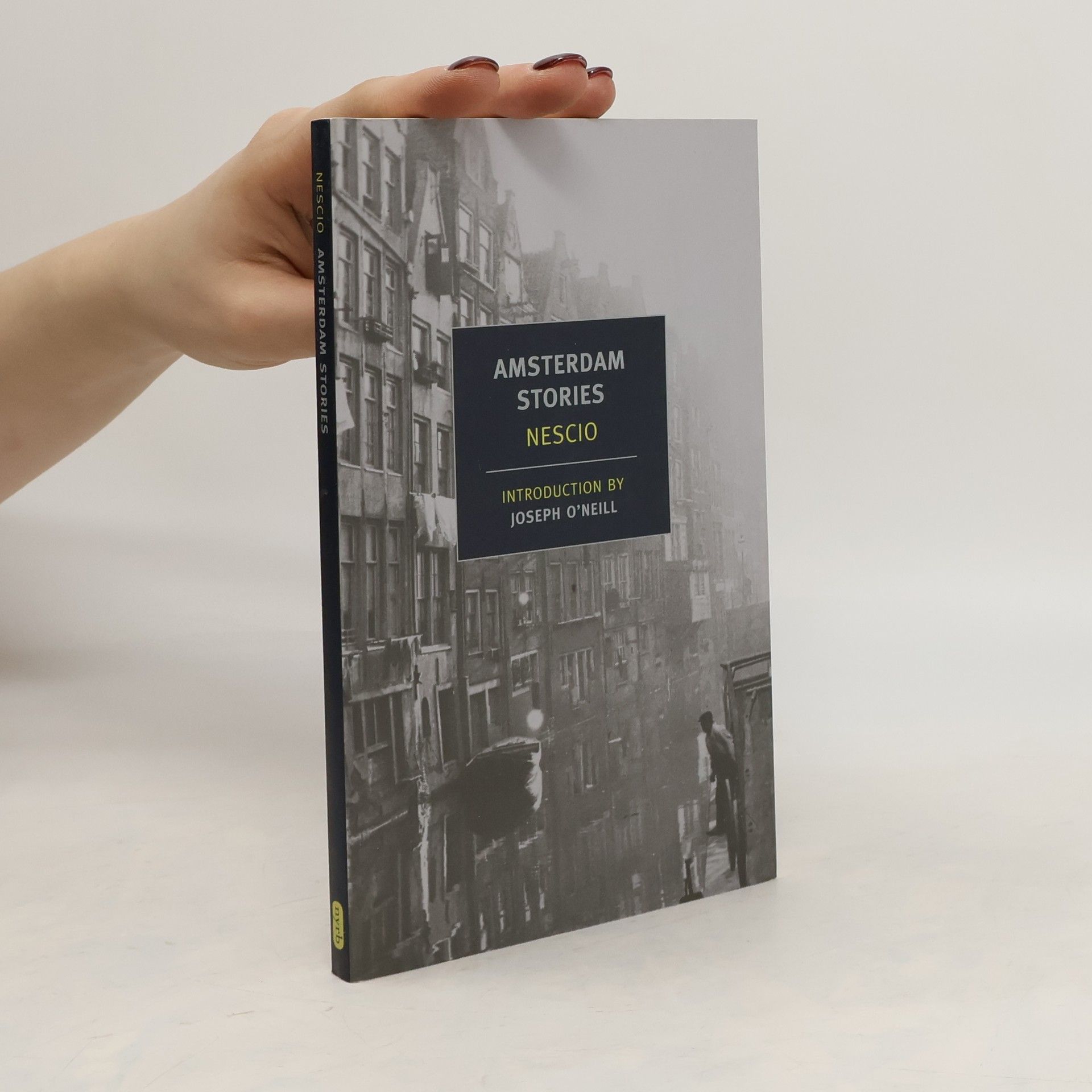No one has written more feelingly and more beautifully than Nescio about the madness and sadness, courage and vulnerability of youth: its big plans and vague longings, not to mention the binges, crashes, and marathon walks and talks. No one, for that matter, has written with such pristine clarity about the radiating canals of Amsterdam and the cloud-swept landscape of the Netherlands. Who was Nescio? Nescio—Latin for “I don’t know”—was the pen name of J.H.F. Grönloh, the highly successful director of the Holland–Bombay Trading Company and a father of four—someone who knew more than enough about respectable maturity. Only in his spare time and under the cover of a pseudonym, as if commemorating a lost self, did he let himself go, producing over the course of his lifetime a handful of utterly original stories that contain some of the most luminous pages in modern literature. This is the first English translation of Nescio’s stories.
Nescio Books
Writing under the pseudonym Nescio, this Dutch author crafted prose that is now considered among the finest in the Dutch language. Despite publicly acknowledging his authorship late in life to protect his business career, his literary legacy is profound. His works are celebrated for their unique style and the depth of insight they offer readers. Nescio left an indelible mark on Dutch literature through his masterful command of language and penetrating observations.



Sie haben große Pläne, sie wollen raus, wollen es ganz anders machen als die etablierten Bürger, sie schwadronieren, trinken, rauchen und lesen Bücher. Irgendwann werden sie klüger. Nur Bavink nicht. Bavink dreht durch. Die Helden in diesem Band sind junge Bohemiens im Amsterdam des beginnenden 20. Jahrhunderts, unbezähmbare Idealisten, die die Welt des Geldes und der Ordnung verachten und ihren eigenen Weg suchen. Der führt nicht immer zum Erfolg – »doch bevor wir ein Leichentuch des Pessimismus über diesen verfehlten Elan werfen, sollten wir bedenken, dass aus ihm großartige Erzählungen entstanden sind, in denen sowohl der Enthusiasmus als auch das Scheitern ... auf wundersame Weise lebendig geblieben sind.« (Cees Nooteboom) Keiner hat lakonischer und schöner über Draufgängertum und Sehnsüchte junger Menschen, über ihre wilden Träume und ihre Verletzlichkeit geschrieben als Nescio. Von ihm, dem seriösen Geschäftsmann, dem genauen Gegenteil seiner Figuren, wurden zu seinen Lebzeiten nur eine Handvoll Erzählungen veröffentlicht, die bis heute von ihrer Kraft nichts verloren haben.